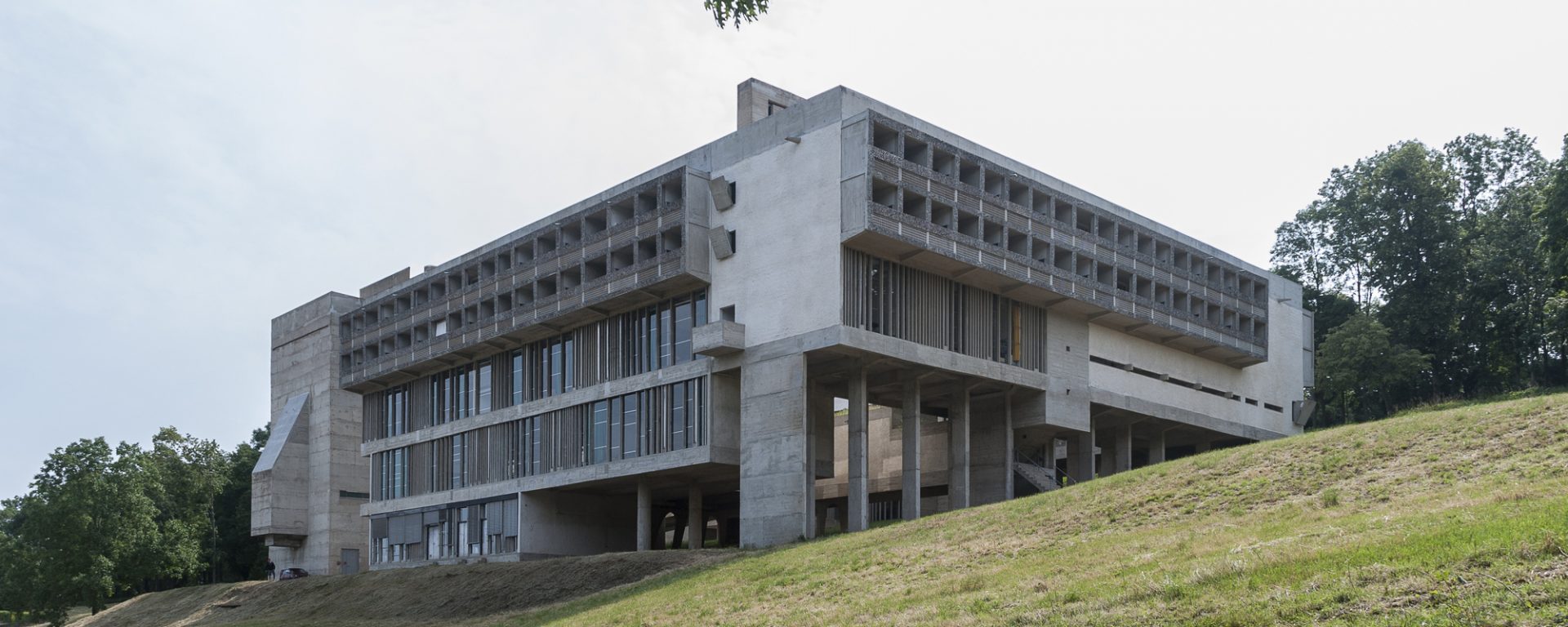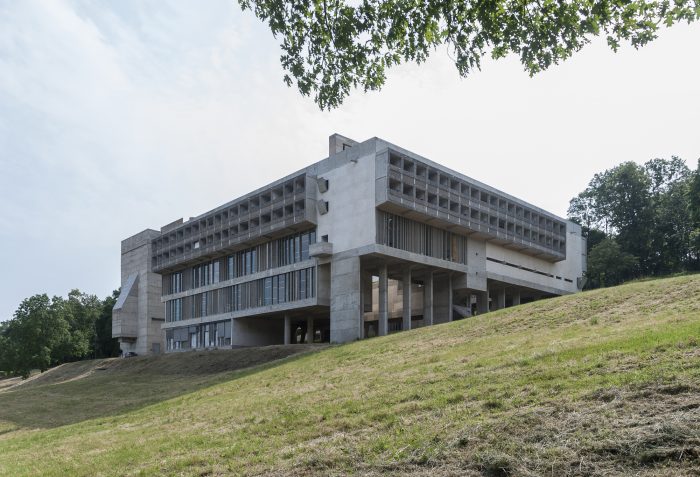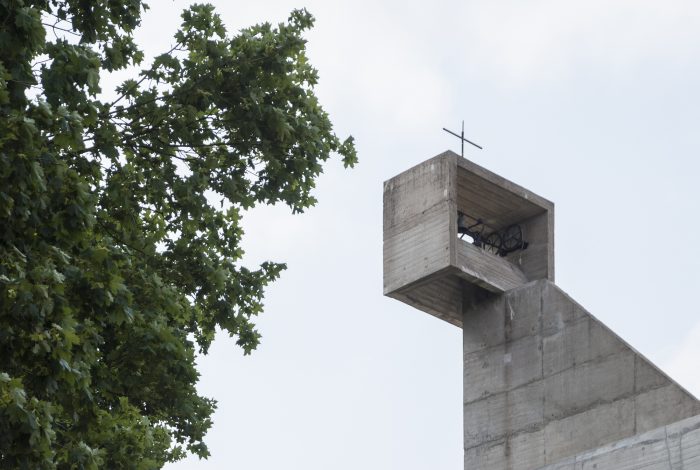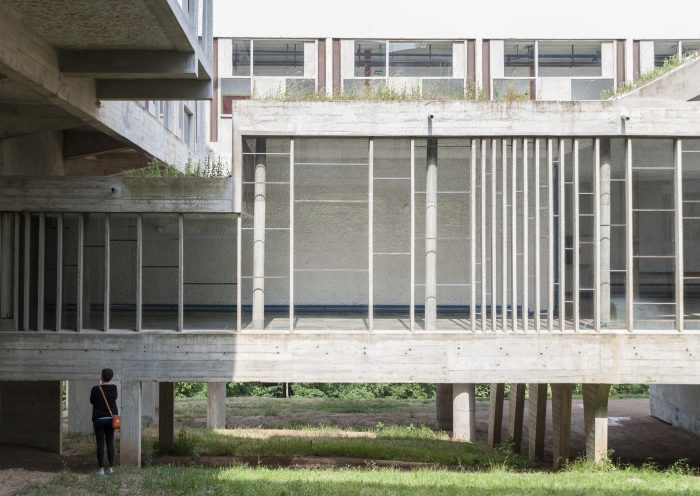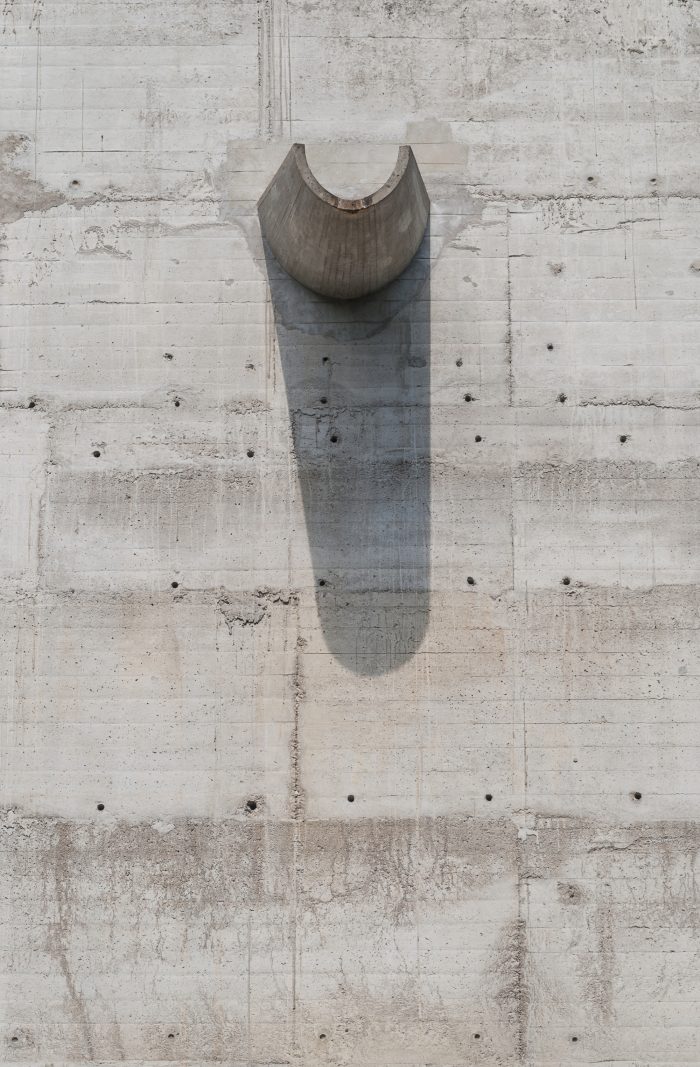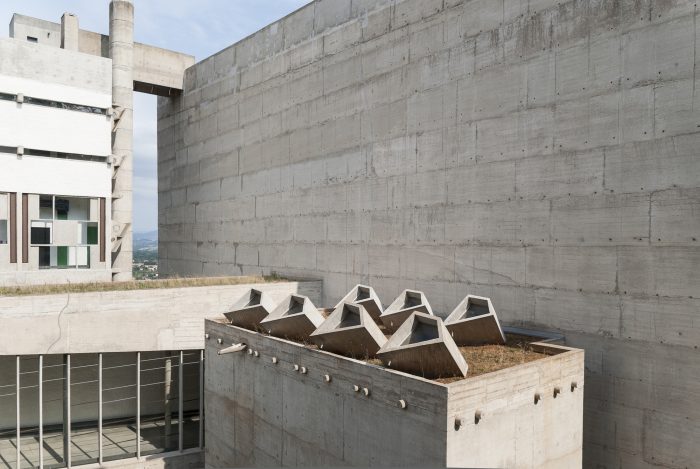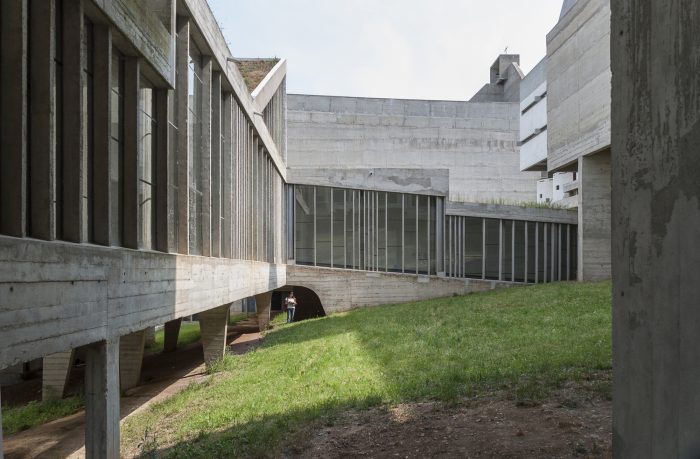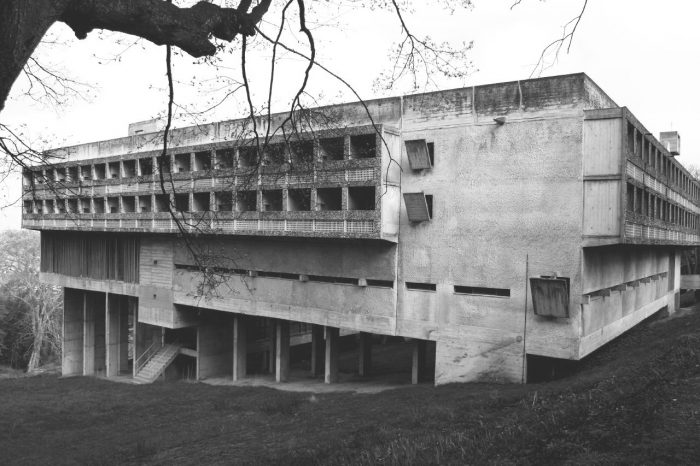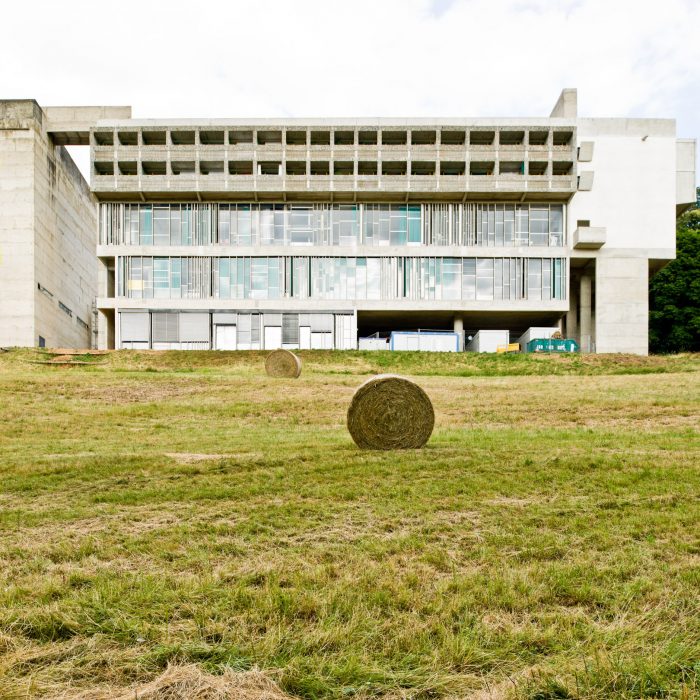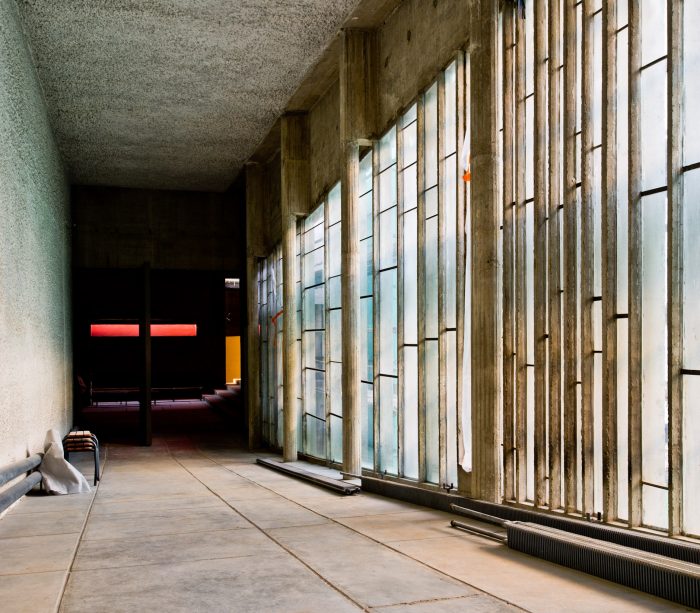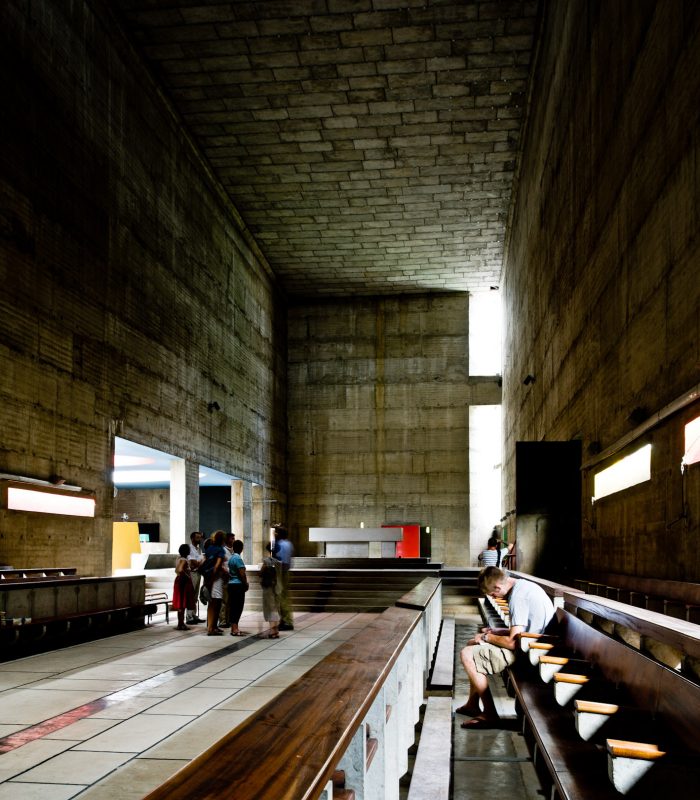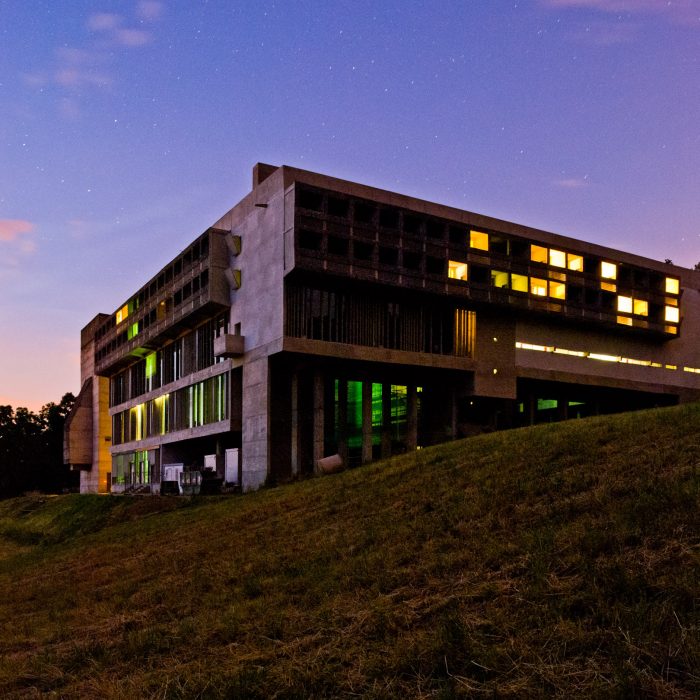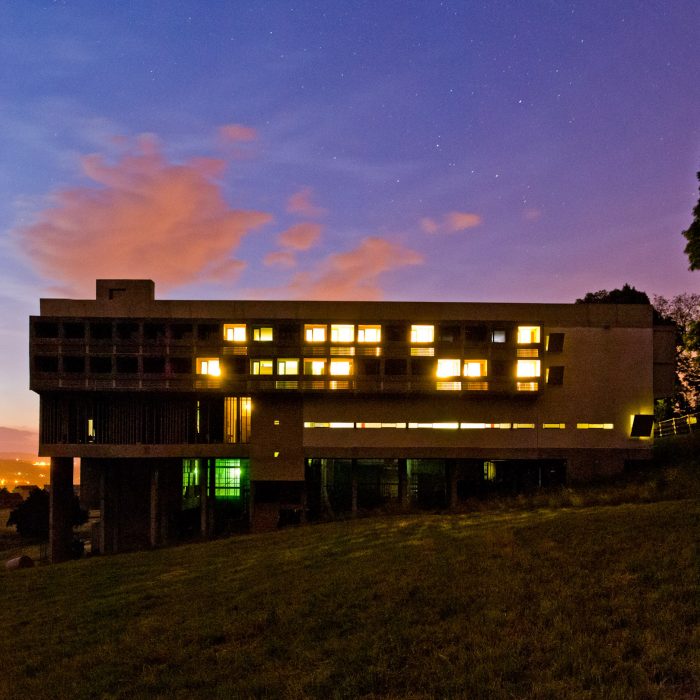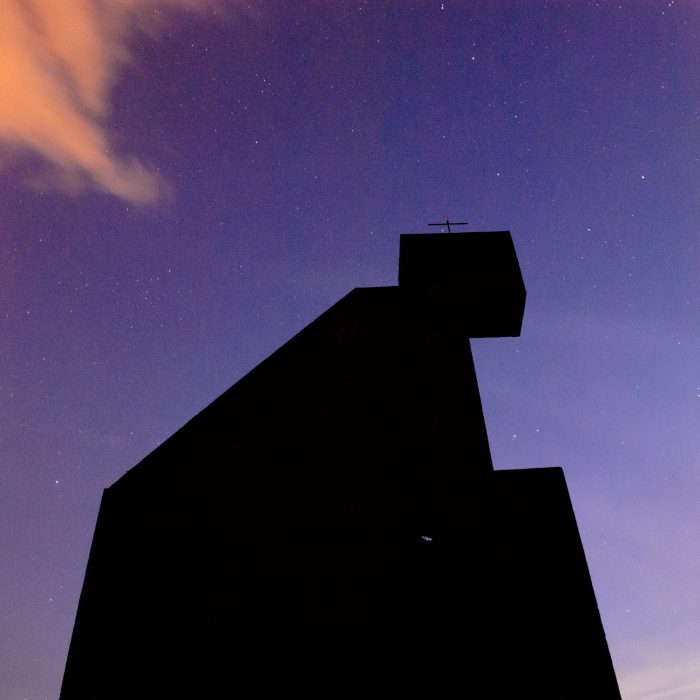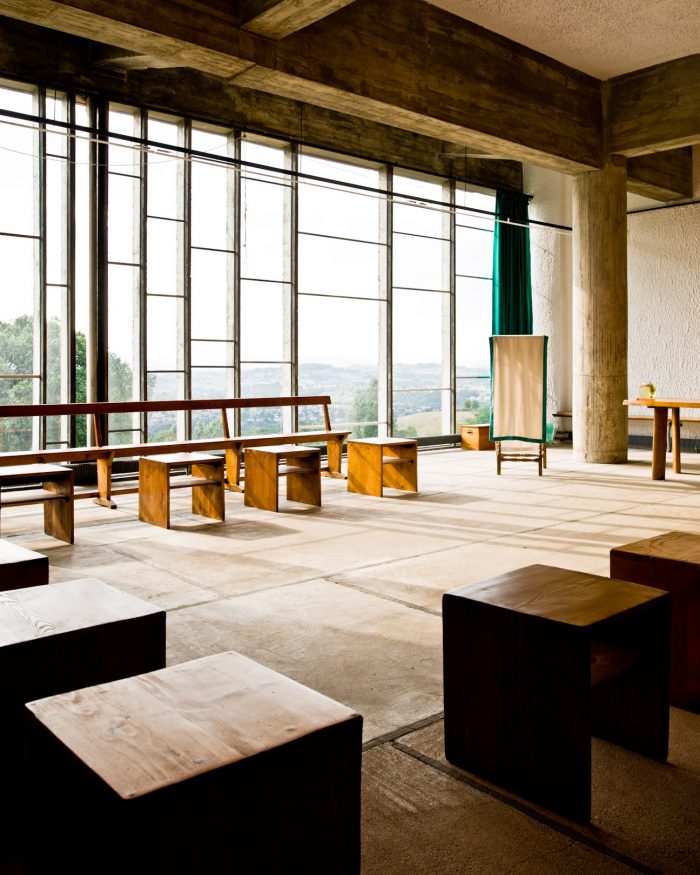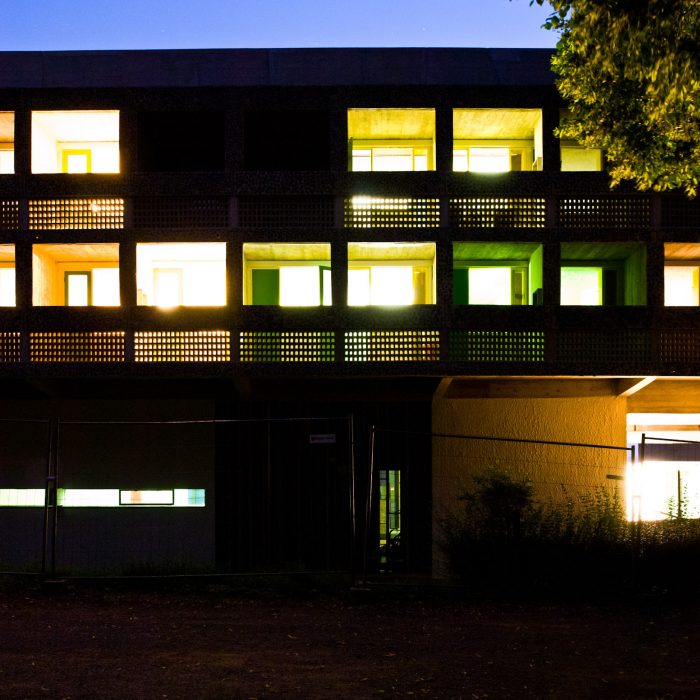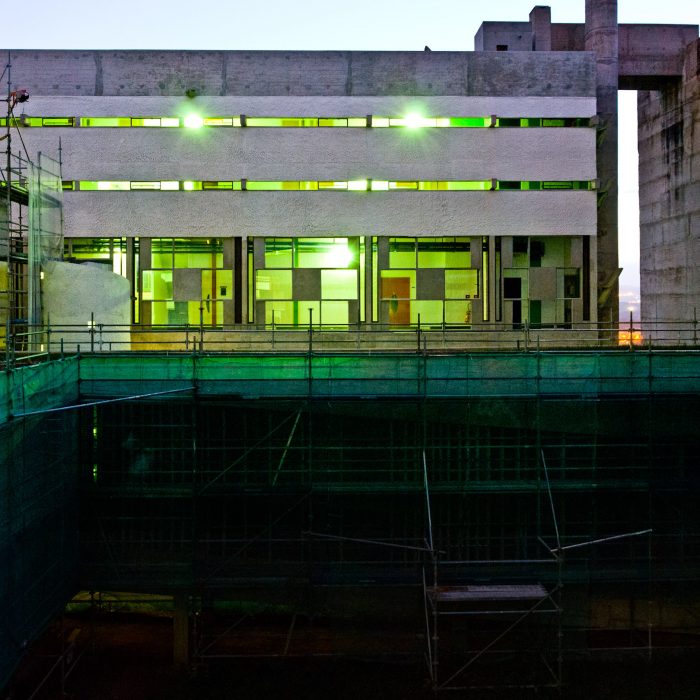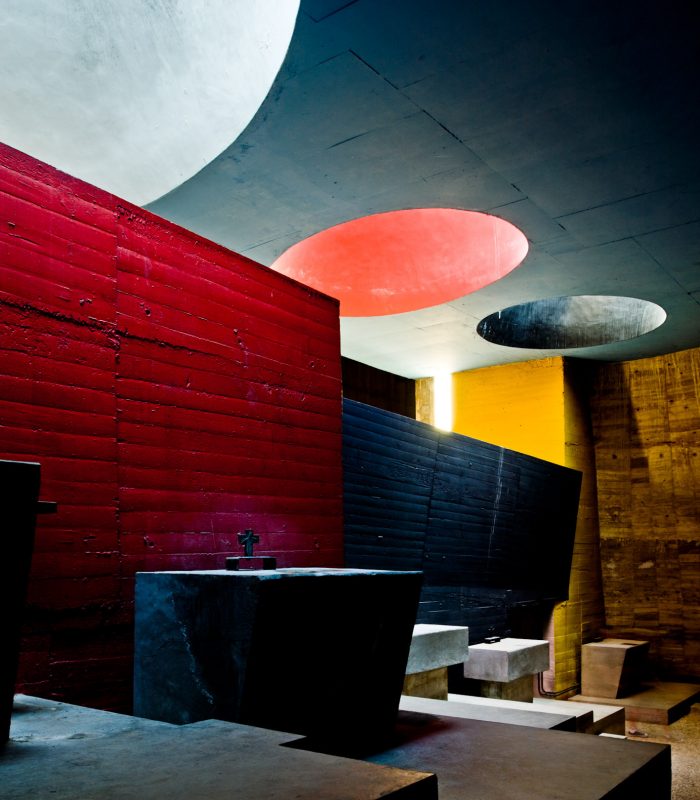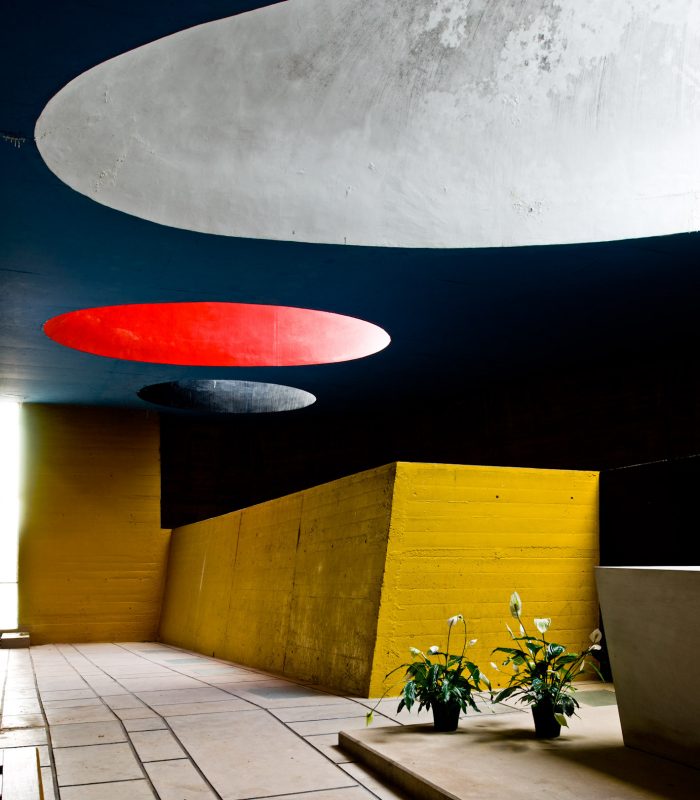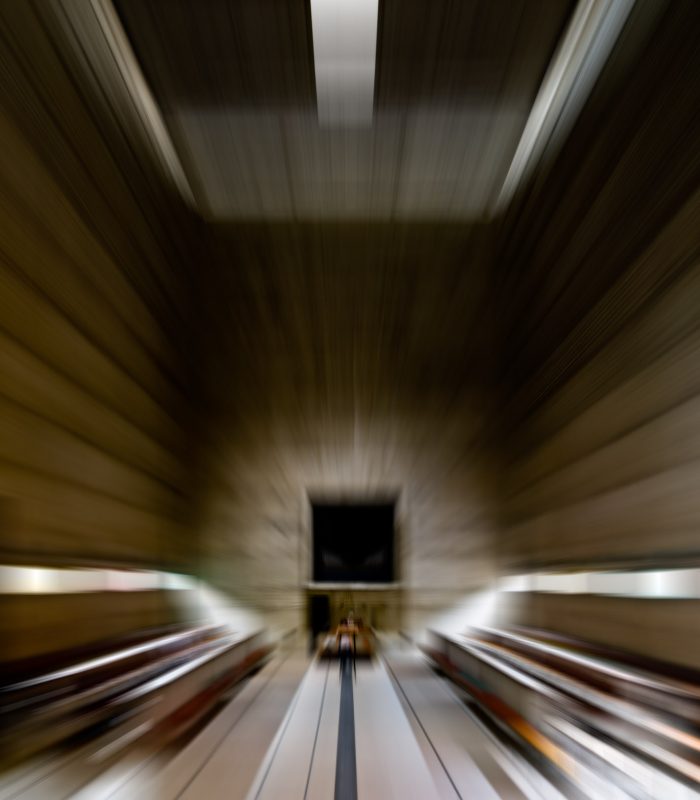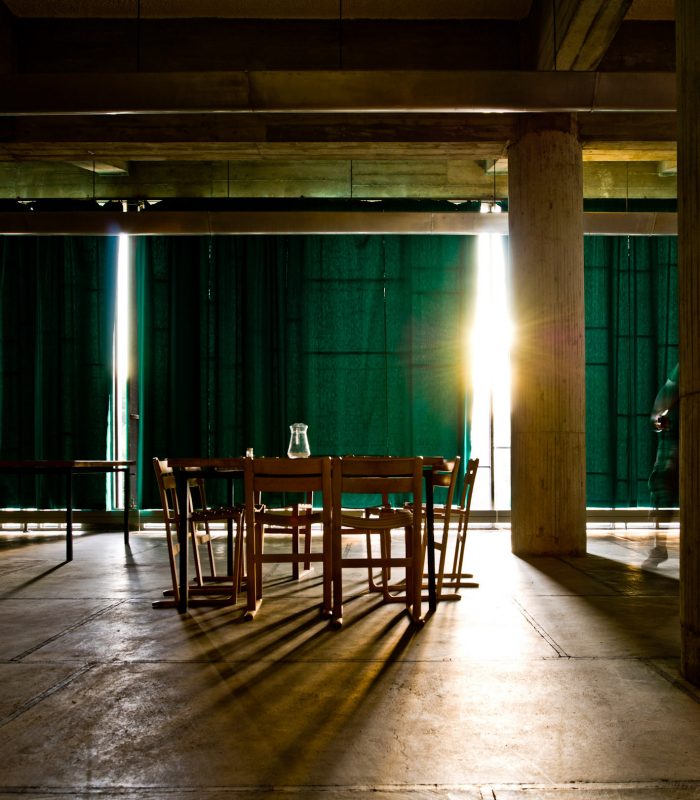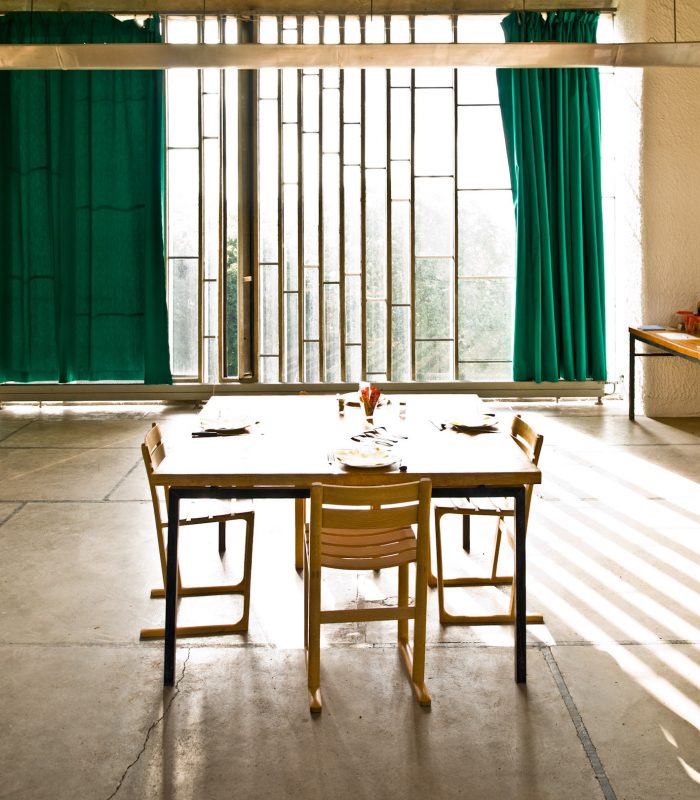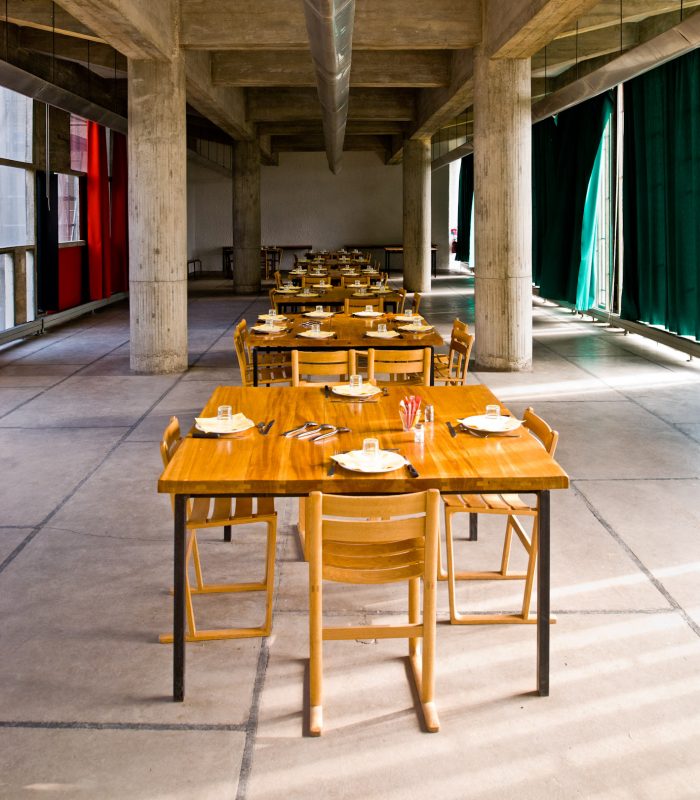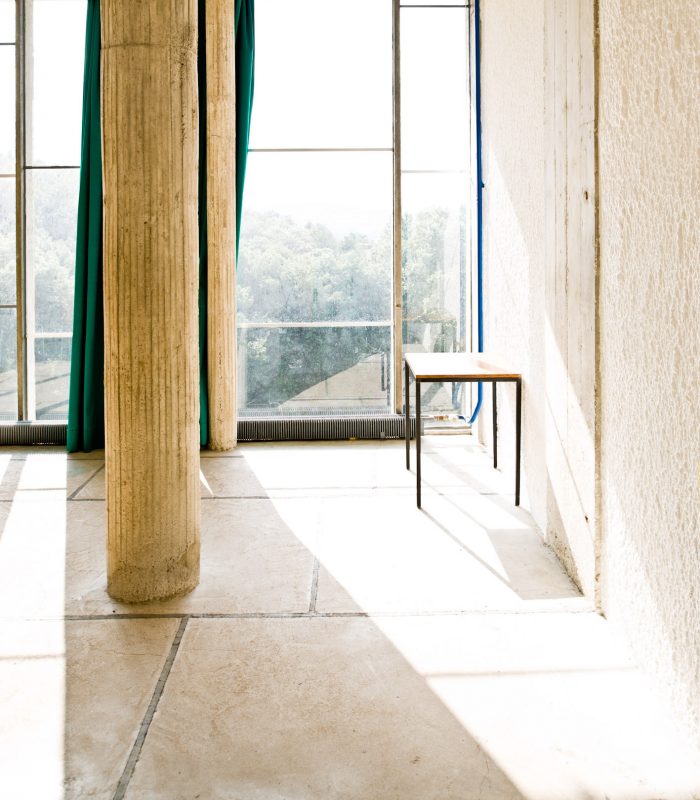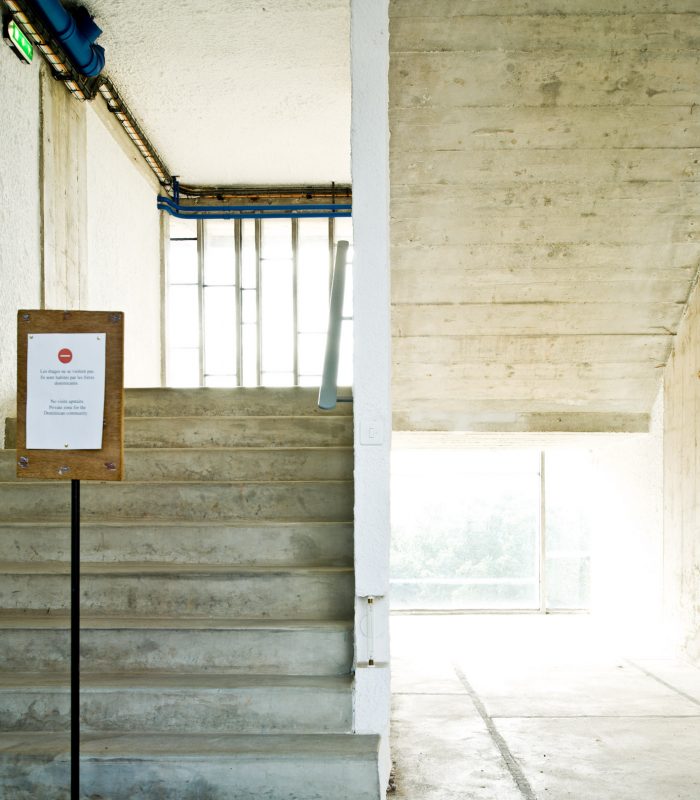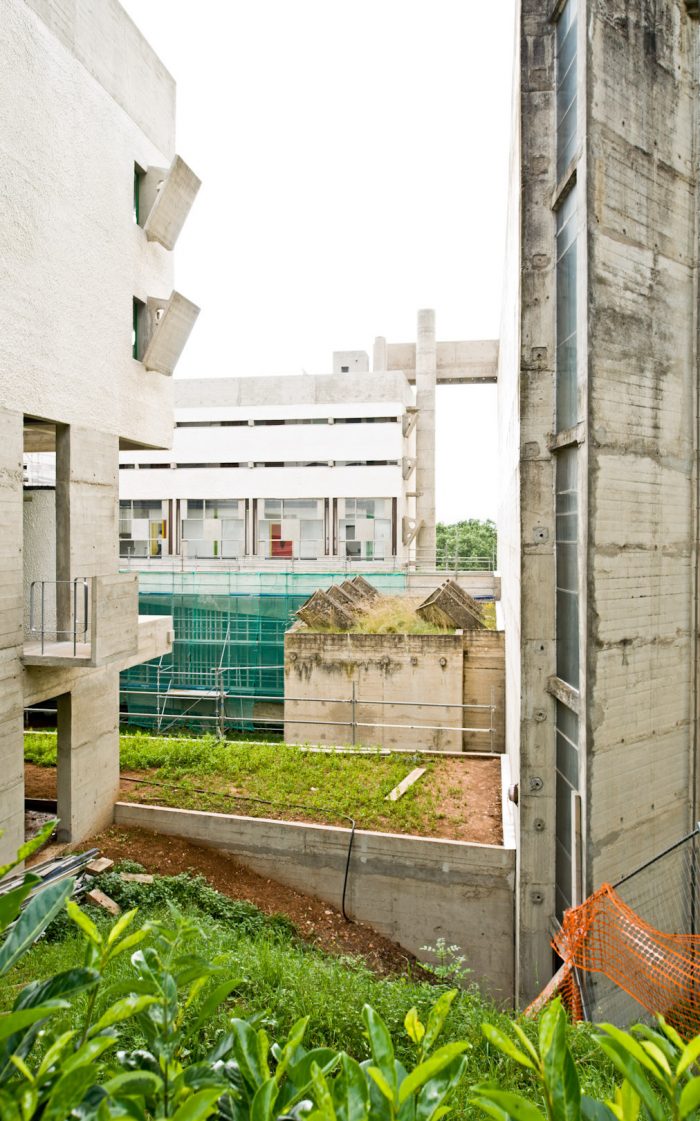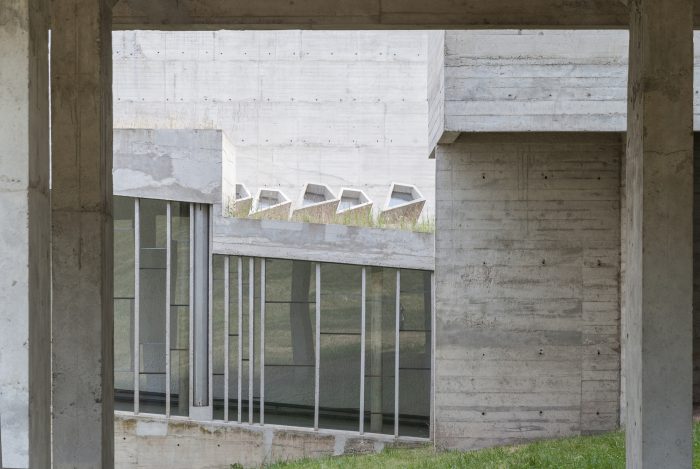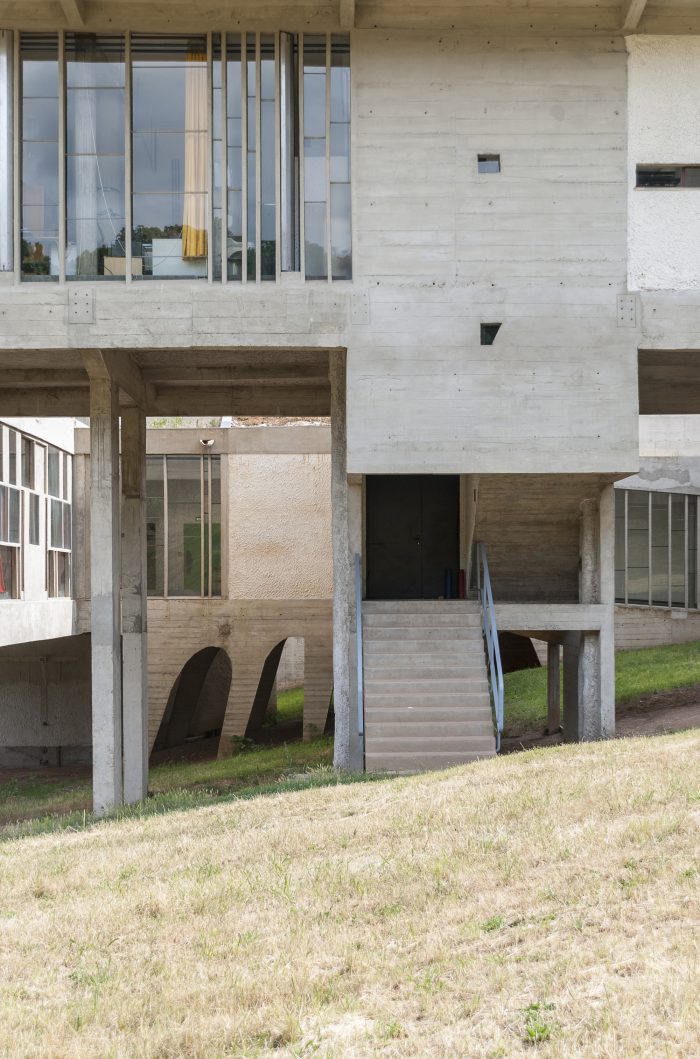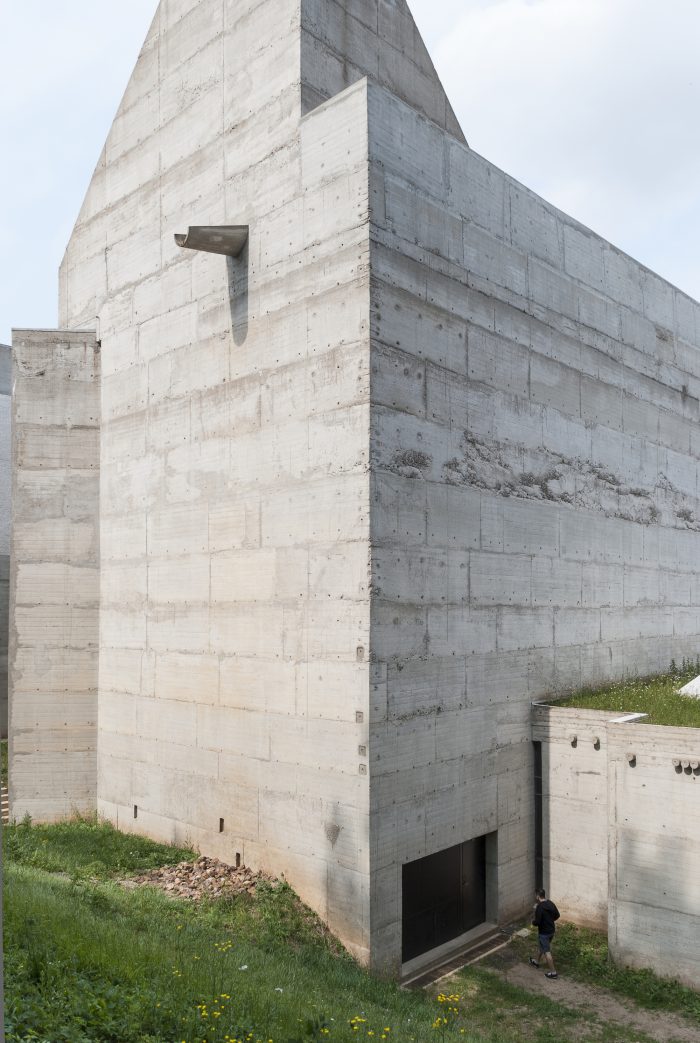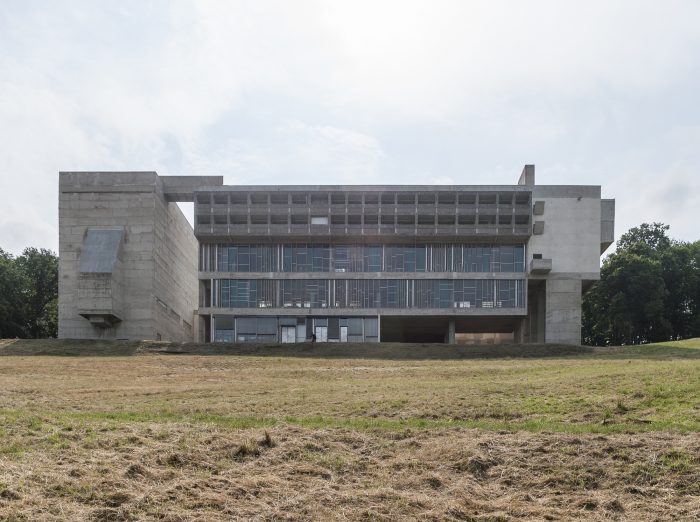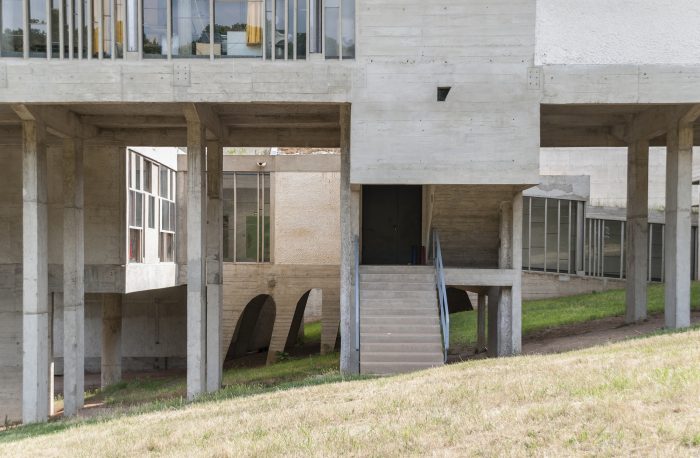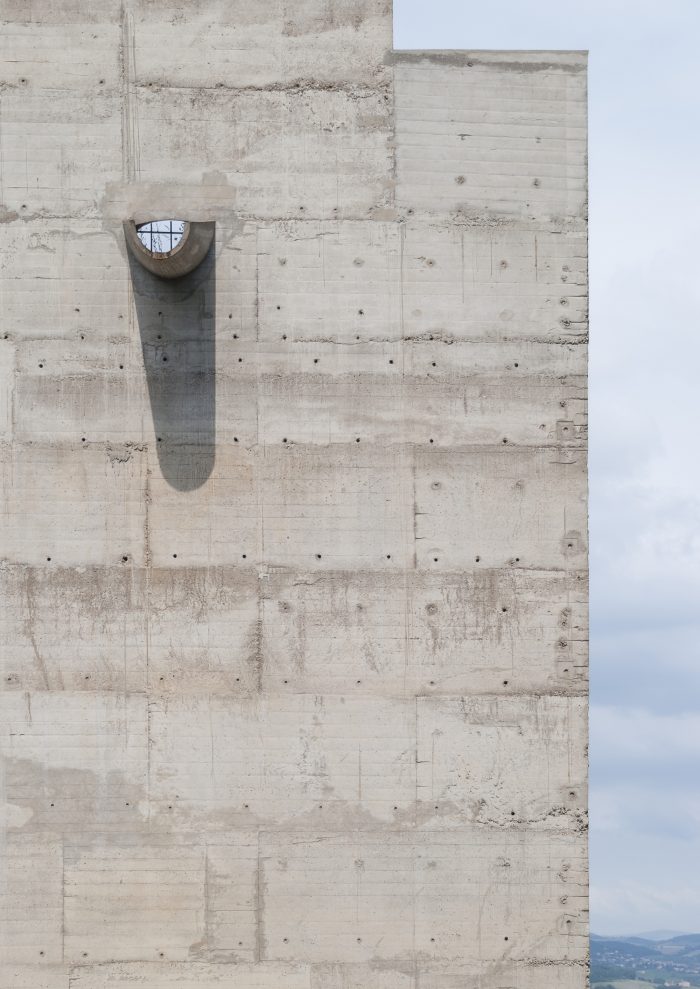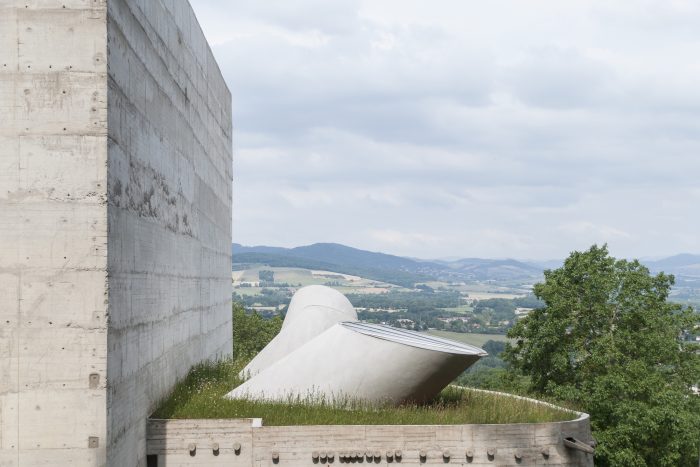拉图雷特修道院是勒-柯布西耶在欧洲完成的最后一座建筑,也被很多人认为是他最独特的方案。它是为一个默默无闻的修士群体而建造的自足世界,为了适应修士们独特而特殊的生活方式,修道院由一百个独立的单间、公共图书馆、食堂、屋顶回廊、教堂和教室组成。
The Convent of La Tourette is Le Corbusier’s final building completed in Europe, and is also thought by many to be his most unique program. It was built to be a self-contained world for a community of silent monks, and to accommodate the unique and specific lifestyle of the monks, the monastery is made of one hundred individual cells, a communal library, a refectory, a rooftop cloister, a church, and classrooms.
玛丽-阿兰-库图里耶神父对建筑师的一个要求是,”为一百个身体和一百颗心创造一个安静的住所”。
勒-柯布西耶的建筑以其五个关键要素而著称,这五个要素在拉图雷特修道院的晚期现代主义风格中是存在的。
The one request to the architect by Father Marie-Alain Couturier was that he “create a silent dwelling for one hundred bodies and one hundred hearts.”
The architecture of Le Corbusier is distinguishable for its five key elements, which are present in the late Modernist style of the Convent of La Tourette.
在这个具体的项目中,其中比较明显的是pilotis,或者说是承重柱,它们排列在内墙,并将外墙开成长条形窗户。经典的草地屋顶创造了一个建筑长廊,与Villa Savoye有关,尽管修道院的背景与住宅有很大不同。
The more obvious of these in this specific project are the pilotis, or load-bearing columns, which line the inside walls and open the facade to long strip windows. The classic grass rooftops create an architectural promenade, relating back to the Villa Savoye, although the context of the convent is very different than of the residence.
这个地点是由柯布西耶特别选择的,因为他被陡峭的坡岸和强大的景观所吸引。百间单间中的每一间都有一个朝外的阳台,下面是公共区域,回廊环绕屋顶。建筑的结构形式为钢筋混凝土,四个外墙面中的三个都有波浪形的玻璃面。
The site was specifically chosen by Corbusier, as he was drawn to the steeply sloping bank with powerful views. Every one of the hundred cells features an outward-facing balcony, with communal areas underneath and the cloister running around the roof. The structural form of the building is reinforced concrete, with undulating glass surfaces located on three of the four exterior faces.
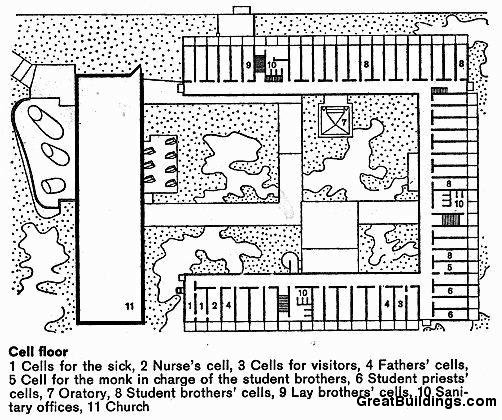
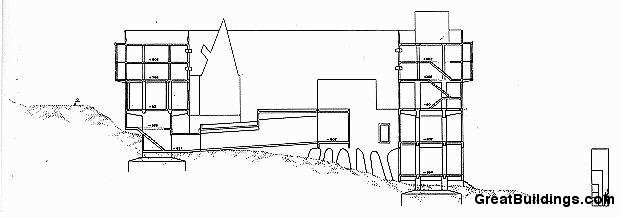
修道院作为多明我会修士的小教堂、住所和学习场所而建,围绕着中央庭院形成一个U形的群体,庭院的尽头被小教堂封闭。
建筑师勒-柯布西耶的意图是 “给修士们提供当今人类最需要的东西:沉默与安宁……”。这座修道院并不炫耀,它的生命力在于内部”。虽然最终实现了这一目标,但对于一些单间的大小,以及隔音和声学效果,人们还是有所保留。如今,维护问题仍然非常普遍,混凝土开裂、绝缘材料有缺陷、电力安装危险。
Built as a Chapel, residence and place of learning for Dominican friars, the monastery groups around a central courtyard a U-shaped mass, and the court is closed off by the chapel at the end.
The intention of architect Le Corbusier was “to give the monks what men today need most: silence and peace… This Monastery does not show off; it is on the inside that it lives.” Although this was ultimately achieved, there were still reservations about the size of some of the cells, as well as the soundproofing and acoustics. Maintenance issues are still very prevalent today, with cracking concrete, defective insulation, and dangerously installed electricity.
这座建筑的大部分个性都在内部,公共区域的落地玻璃,如教堂房间和食堂的西向景观,可以看到山谷、图书馆和教堂入口。
竖向混凝土浮雕或ondulatoires的不均匀间距,以及它们之间类似的分割和不均匀间距的水平构件,都是根据勒-柯布西耶的模块化比例系统设计的。
Much of the personality of this building is found in the interior, with the floor-to-ceiling glazing in the public areas, like the chapter room and refectory with their commanding west-facing views over the valley, library, and church entrance.
The uneven spacing of the vertical concrete mullions, or ondulatoires, and the similar divisions and uneven spacing of the horizontal components between them were fashioned according to the Modular system of proportions of Le Corbusier.
建筑长廊中最精彩的时刻之一是通往教堂入口的坡道:一个朴素的混凝土走廊,上面有凹凸不平而又富有韵律的玻璃,它通向一堵严实的金属墙,旋转着让人可以进入教堂的其他部分,发出暗色的光芒。
教堂内部露出了一个混凝土盒子,通过对自然光和强烈色彩的运用,无论是有选择的还是精心布置的,都被赋予了精神实质。”光炮 “被创造出来,因为教堂周围的五个不同类型的开口让日光进入,其中几个开口被大方地雕刻在外部。色彩也在这些开口中出现,使教堂散发着温暖而令人回味的光芒。
One of the best moments of the architectural promenade is the ramp down to the church entrance: an austere, concrete corridor with uneven yet rhythmic glazing, which leads to a stern metal wall that rotates to give access to the dark, colored glow to the rest of the church.
The interior of the church reveals a concrete box which is given a spiritual essence through its use of natural light and strong color, both selectively and carefully placed. “Light cannons” are created as the five different types of openings around the church let in daylight, several of which are graciously sculpted on the exterior. The colors are also present in these openings, which give the church a warm and evokative glow.
截至目前,这座纪念碑已经容纳了大约四十年的时间,迎接着来自世界各地的游客、建筑师、建筑爱好者和学生。今天,它已成为与人文科学和哲学有关的不同学科的聚会场所。
As of now, the monument has housed people for around forty years, welcoming visitors, architects, architecture lovers and students from all over the world. Today it functions as a meeting place for different disciplines connected to the human sciences and philosophy.
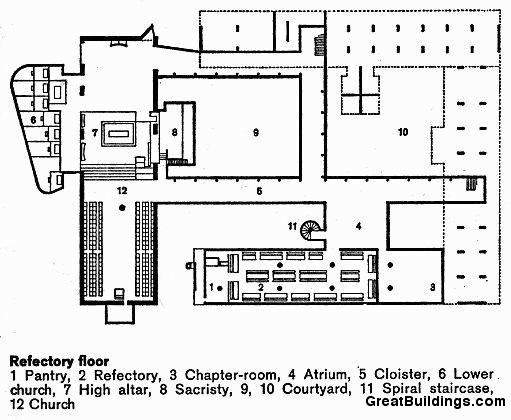

建筑师:Le Corbuiser
年份:1960年
摄影作品:Fernando Schapochnik, Flickr elyullo (CC BY), Samuel Ludwig
撰稿: Eduardo Souza
城市:L’ARBRESLE
国家:法国
Architects: Le Corbuiser
Year: 1960
Photographs: Fernando Schapochnik, Flickr elyullo (CC BY), Samuel Ludwig
Written: Eduardo Souza
City: L’ARBRESLE
Country: France

